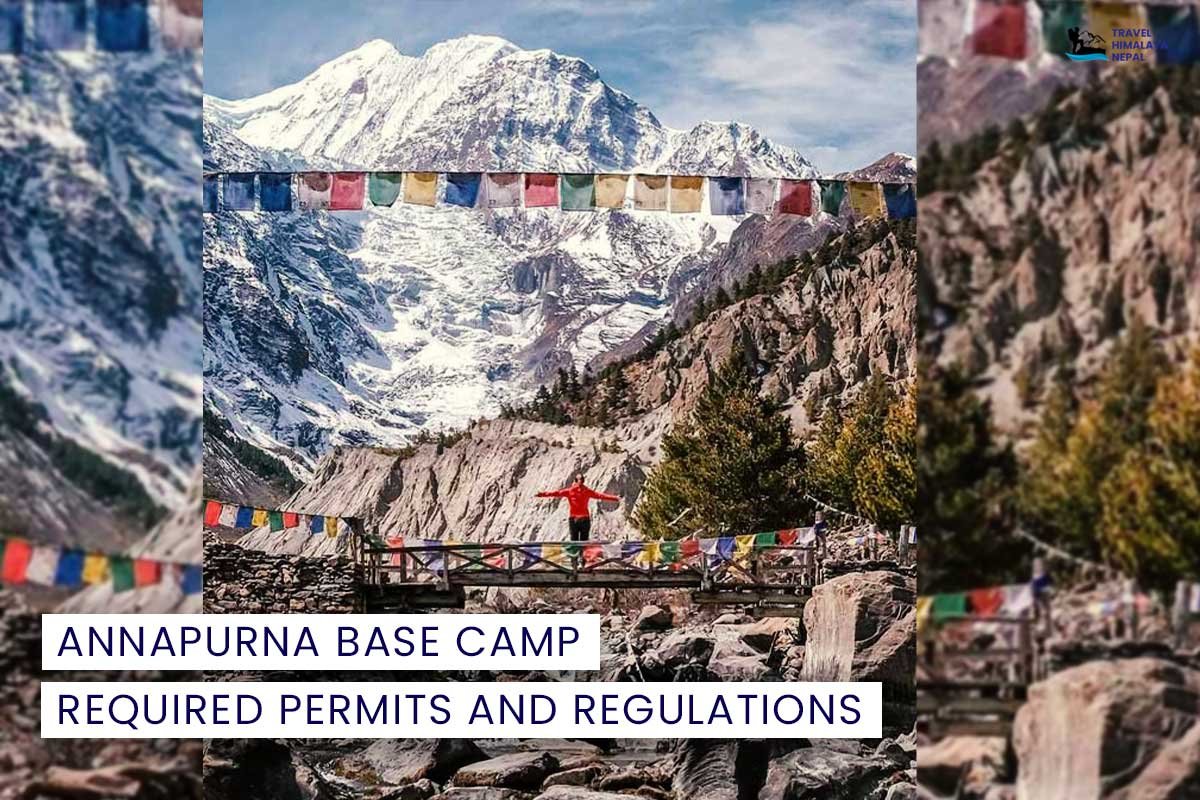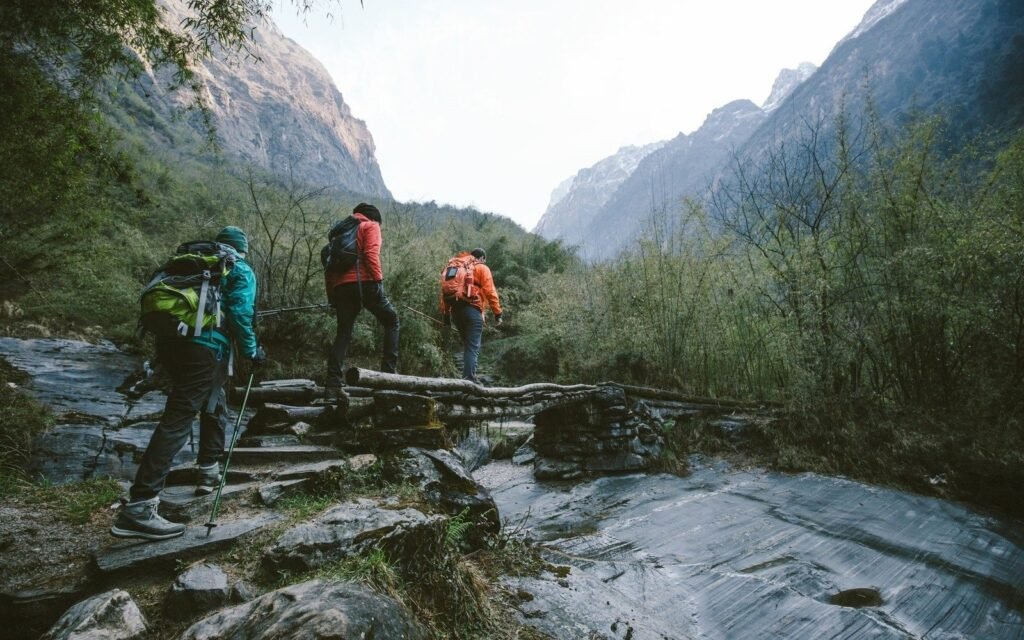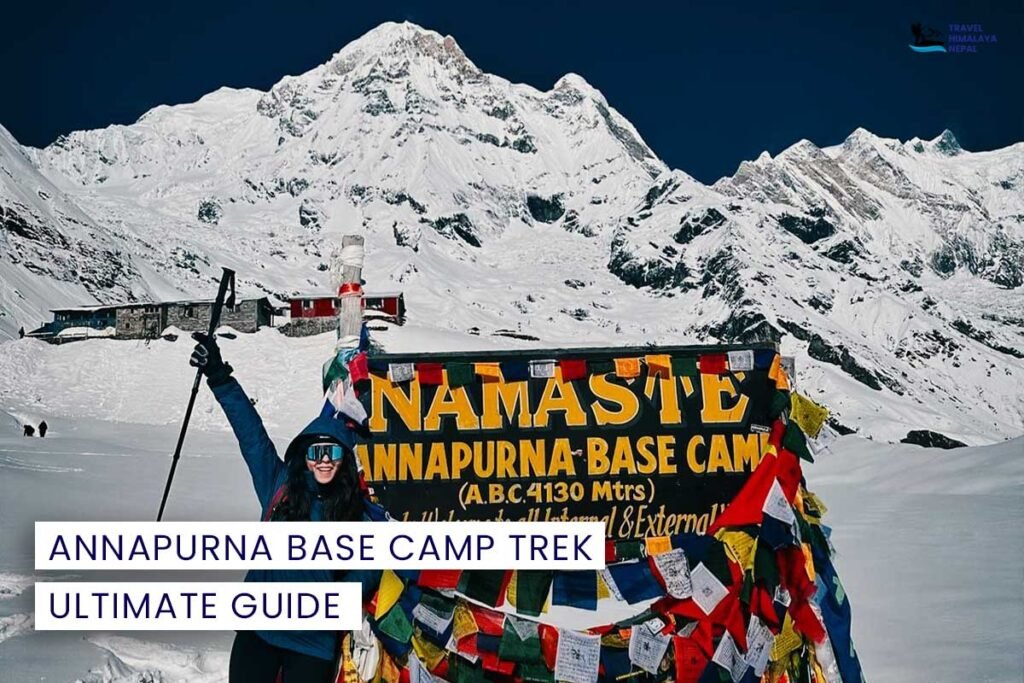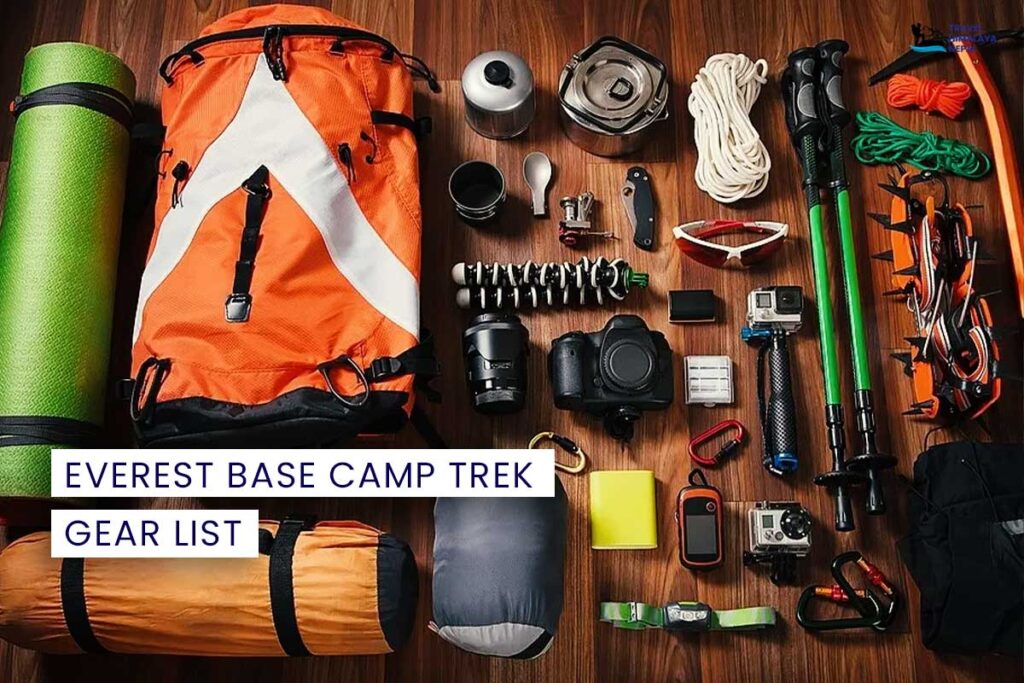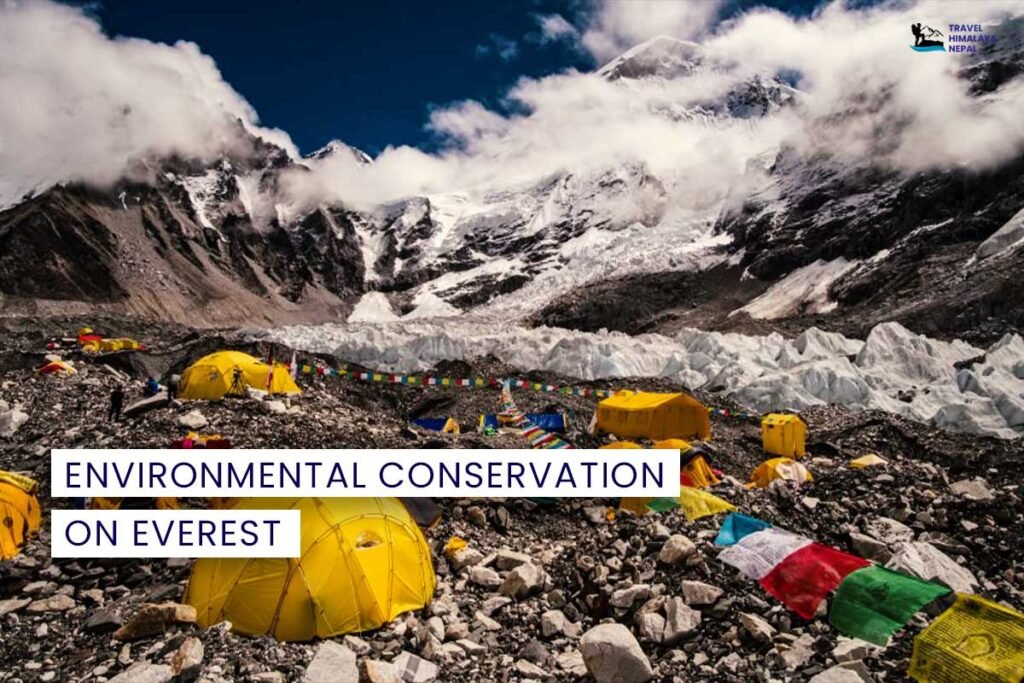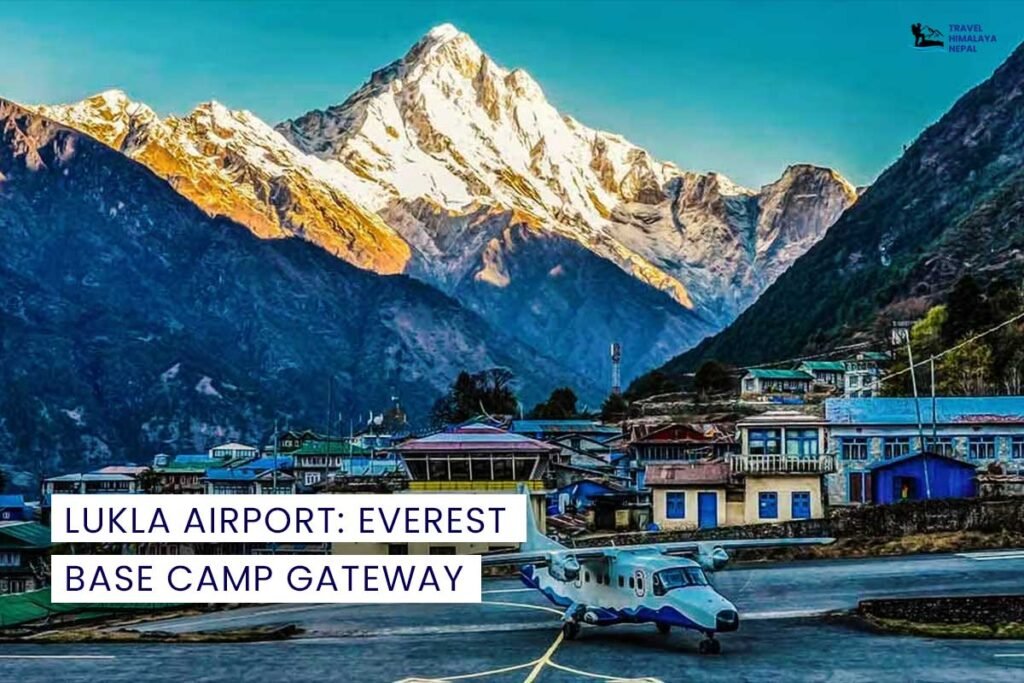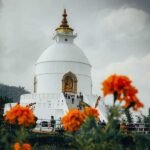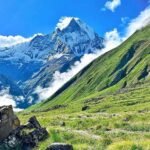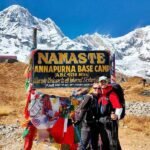Conquering the Annapurna Base Camp Trek (ABCT) is a dream for many adventurers. But before you lace up your boots and hit the trails, there are some essential permits and regulations you need to be aware of. Don’t worry, the process is straightforward, and this guide will equip you with all the knowledge to ensure a smooth and hassle-free trek.
Key Takeaways Table
| Permit | Issuing Authority | Cost (Approx. USD) | Validity |
|---|---|---|---|
| Trekkers’ Information Management System (TIMS) | Nepal Tourism Board (NTB) | $20 | Duration of your trek in Annapurna region |
| Annapurna Conservation Area Permit (ACAP) | Annapurna Conservation Area Project (ACAP) | $23 | Duration of your trek in Annapurna Conservation Area |
Permits Explained
For the Annapurna Base Camp Trek, you’ll need to obtain two mandatory permits:
- Trekkers’ Information Management System (TIMS): This permit helps the Nepal Tourism Board track trekkers and ensure their safety. You can obtain your TIMS card at the NTB office in Kathmandu or Pokhara, or online through a designated agency. Cost: Approximately USD $20. Validity: Valid for the duration of your trek in the Annapurna region.
- Annapurna Conservation Area Permit (ACAP): This permit grants you access to the Annapurna Conservation Area, a protected region renowned for its biodiversity and stunning landscapes. The ACAP fee directly contributes to conservation efforts in the area. You can acquire your ACAP permit at the ACAP office in Kathmandu or Pokhara, or at entry points to the Annapurna Conservation Area. Cost: Approximately USD $23. Validity: Valid for the duration of your trek within the Annapurna Conservation Area.
Remember, a well-informed and prepared trekker is a happy trekker! Now you’re ready to start planning your dream adventure to Annapurna Base Camp!
Additional Considerations
- Multiple Trek Permits: If you plan on combining the Annapurna Base Camp Trek with another route, like the Annapurna Circuit, you might need additional permits depending on the specific region. Research the specific permits required for your chosen itinerary.
- Original Documents: Always carry the originals of your TIMS card and ACAP permit during your trek. You might be asked to present them at checkpoints along the route.
- Photocopies: Make photocopies of your TIMS card and ACAP permit. Keep one copy with you and leave another copy with someone you trust back home in case of emergencies.
- Trekking with a Guide: While not mandatory, trekking with a licensed guide, especially for first-timers, can be a wise decision. Many trekking companies include permit acquisition as part of their packages.
Regulations for a Responsible Trek
- Respect the Environment: The Annapurna Conservation Area is a fragile ecosystem. Practice Leave No Trace principles by properly disposing of waste and minimizing your environmental impact.
- Sustainable Practices: Support local teahouses and businesses that operate sustainably.
- Cultural Sensitivity: Dress modestly when visiting villages and monasteries. Be respectful of local customs and traditions.
- Campfire Restrictions: Campfires are often prohibited in the Annapurna Conservation Area. Use designated cooking areas provided by teahouses.
- Wildlife Encounters: Maintain a safe distance from wild animals. Report any sightings of endangered species to park authorities.
Conclusion
Obtaining the necessary permits and following regulations is a crucial part of a successful Annapurna Base Camp Trek. By following these guidelines, you’ll contribute to the sustainability of the region and ensure a safe and enjoyable adventure in the heart of the Himalayas.
Bonus Tip: Familiarize yourself with altitude sickness symptoms and acclimatization practices before embarking on your trek.
Necessary Permits for ABC Trek
Before setting foot on the trails leading to Annapurna Base Camp, trekkers must acquire several key permits. The primary permits include the Trekkers’ Information Management System (TIMS) card and the Annapurna Conservation Area Permit (ACAP). Each of these serves a specific purpose in ensuring your trek is legal and contributes to the conservation efforts in the region.
- TIMS Card: Essential for all trekkers in Nepal, the TIMS card helps in monitoring and managing trekkers’ routes and ensuring their safety. It’s a vital component for rescue operations in case of emergencies. More about obtaining this card can be found on our guide to trek permits.
- Annapurna Conservation Area Permit (ACAP): This permit is required to enter the Annapurna Conservation Area, home to diverse ecosystems and cultural heritage sites. The fee contributes to the conservation and maintenance of the area. Detailed information is available on our required permits page.
Understanding Local Regulations
When trekking through such pristine environments, being aware of and compliant with local regulations is paramount. These rules are in place to protect the natural landscape and cultural integrity of the regions you’ll explore. Key regulations include restrictions on littering, campfires, and cultural etiquette.
- Environmental Protection: Trekkers are urged to follow ‘Leave No Trace’ principles to minimize their environmental impact. Information on these guidelines is thoroughly covered in our environmental conservation section.
Planning Your Permit Applications
Obtaining your permits well in advance of your trek can significantly ease your preparation process. It is advisable to arrange these permits through a registered trekking agency, which can handle the bureaucratic elements while you focus on preparing for the physical demands of the trek.
- Booking Through Agencies: Most trekkers opt to book their trek through agencies which can provide detailed itineraries and handle permit applications. Visit our group trekking options to explore agency packages and services.
Cultural Norms and Etiquette
The ABC Trek not only offers breathtaking natural beauty but also a chance to experience the rich cultural heritage of the Annapurna region. Observing local customs and traditions is not just respectful but enhances your trekking experience.
- Local Interaction: Engage respectfully with local communities. Understanding basic Nepali phrases and greetings can enrich your interaction. Our cultural insights section provides a deeper understanding of what to expect and how to conduct oneself.
- Religious Sites: Many trails pass by ancient monasteries and sacred sites. Dress modestly and always walk clockwise around religious structures to honor local practices.
Physical Preparation and Health Safety
Trekking to Annapurna Base Camp is a physically demanding endeavor that requires careful preparation. Here’s how you can prepare your body and mind to ensure you are trek-ready.
- Fitness Training: Start physical training at least two months prior to your trek. Focus on cardiovascular exercises, strength training, and hiking to build stamina and muscle strength. Detailed fitness plans are available in our physical preparation guide.
- Altitude Sickness Prevention: Acclimatization is key in avoiding altitude sickness. Learn more about the symptoms and preventive measures in our altitude sickness guide.
Practical Tips for Trekking
A successful trek requires more than just physical and cultural preparation. Here are some practical tips to help you manage your journey effectively.
- Packing Essentials: Knowing what to pack can make a significant difference in your trekking experience. From layered clothing to essential gear, check our comprehensive list on what to pack for the ABC Trek.
- Safety and Etiquette: While on the trek, it’s important to adhere to safety guidelines and trekking etiquette to ensure a safe experience for yourself and others. Our section on trek safety and etiquette offers detailed advice on these topics.
Emergency Preparedness and Procedures
The unpredictable nature of high-altitude trekking makes it essential to be prepared for any emergency. Knowing the available emergency services and having a clear plan can be life-saving.
- Emergency Contacts and Procedures: Familiarize yourself with local emergency contacts and the procedures for evacuation in case of medical or other emergencies. For more details, visit our emergency procedures guide.
- Health and Travel Insurance: Securing appropriate travel and health insurance before your trek is crucial. Insurance should cover emergency evacuation and hospitalization. Learn about your options in our trekking insurance guide.
Final Thoughts and Additional Resources
Planning a trek to Annapurna Base Camp is an exhilarating challenge that requires thorough preparation in terms of permits, physical readiness, and understanding local customs. By following the guidelines outlined in this article and utilizing the resources available through the links provided, trekkers can ensure a safe, enjoyable, and respectful experience.
- Comprehensive Guides and Tips: For further reading, including tips on trekking with children and insights into the flora and fauna of the region, browse through our detailed guides such as trekking with children and flora and fauna insights.
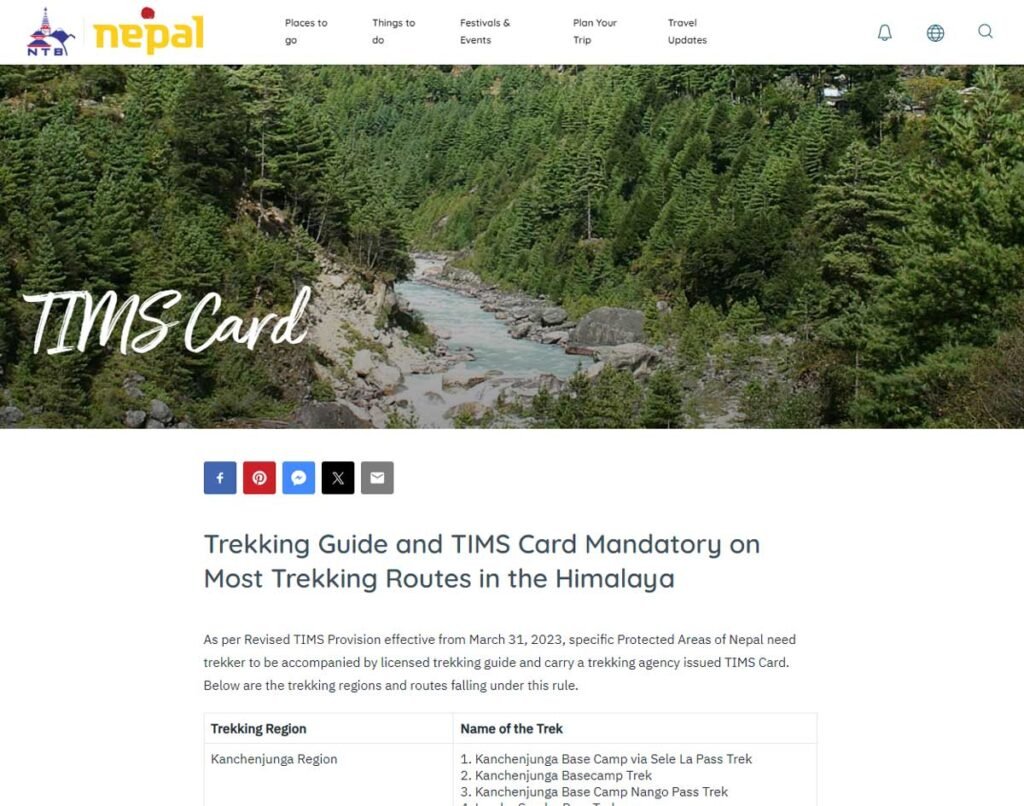
Additional Links to Help You
Absolutely! Here are some additional links and resources for all the permits and requirements for the Annapurna Base Camp Trek:
Permits:
- Trekkers’ Information Management System (TIMS):
- Nepal Tourism Board (NTB) Official Website: https://ntb.gov.np/plan-your-trip/before-you-come/tims-card
- Trekking Agencies’ Association of Nepal (TAAN): https://www.taan.org.np/ (TIMS can sometimes be obtained through registered TAAN agencies)
- Annapurna Conservation Area Permit (ACAP):
- Annapurna Conservation Area Project (ACAP): https://ntnc.org.np/project/annapurna-conservation-area-project-acap (information on fees and regulations)
Regulations:
- Leave No Trace Principles: https://lnt.org/the-7-principles-of-leave-no-trace-winter-recreation/
- Department of National Parks and Wildlife Conservation (DNPWC): https://dnpwc.gov.np/ (general information on national park regulations in Nepal)
Additional Resources:
- Nepal Tourism Board: https://ntb.gov.np/ (general information on trekking in Nepal)
- Annapurna Base Camp Trek Guide: (in-depth guide with information on permits, regulations, and itinerary planning)
Remember: It’s always recommended to double-check the latest fees and regulations with the official Nepal Tourism Board or Annapurna Conservation Area Project websites before your trek. These resources can change occasionally, and the most up-to-date information will ensure a smooth permitting process.
FAQs of Required Permits of ABC Trek
Here are 10 frequently asked questions (FAQs) on the Required Permits and Regulations for the ABC Trek:
- What permits are required for the ABC Trek? You’ll need the Annapurna Conservation Area Permit (ACAP) and a Trekkers’ Information Management System (TIMS) card to trek in the Annapurna region.
- How do I obtain these permits? Permits can be obtained from the Nepal Tourism Board offices in Kathmandu and Pokhara. If you’re trekking with an agency, they usually handle these details.
- Where does the ABC Trek start? The trek typically starts at Nayapul, which is a short drive from Pokhara.
- Can I see Mount Everest from the Annapurna Base Camp? No, Mount Everest is not visible from Annapurna Base Camp as they are in opposite directions.
- What kind of accommodation is available on the ABC Trek? Accommodations are mainly teahouses, offering basic rooms and communal facilities, especially as you ascend higher.
- How difficult is the ABC Trek? The ABC Trek is considered moderate; it is not as strenuous as some other high-altitude treks but involves plenty of ups and downs on rugged trails.
- What is the best time to go on the ABC Trek? The best times are during the spring (March to May) and autumn (September to November) seasons when the weather is most stable and the views are clear.
- What should I do in case of an emergency? In emergencies, immediate evacuation can be arranged via helicopter to Pokhara or Kathmandu, weather permitting.
- Do I need a guide for the ABC Trek? While not mandatory, having a guide is beneficial for navigation, local insight, and in case of emergencies. Guides can also enhance your understanding of the local culture and environment.
- What are the symptoms of altitude sickness and how can I prevent it? Symptoms include headaches, nausea, and dizziness. Prevention includes proper acclimatization, staying hydrated, and avoiding rapid ascents.
These questions and answers provide essential information for trekkers preparing for the ABC Trek and help ensure a safe and enjoyable experience.

